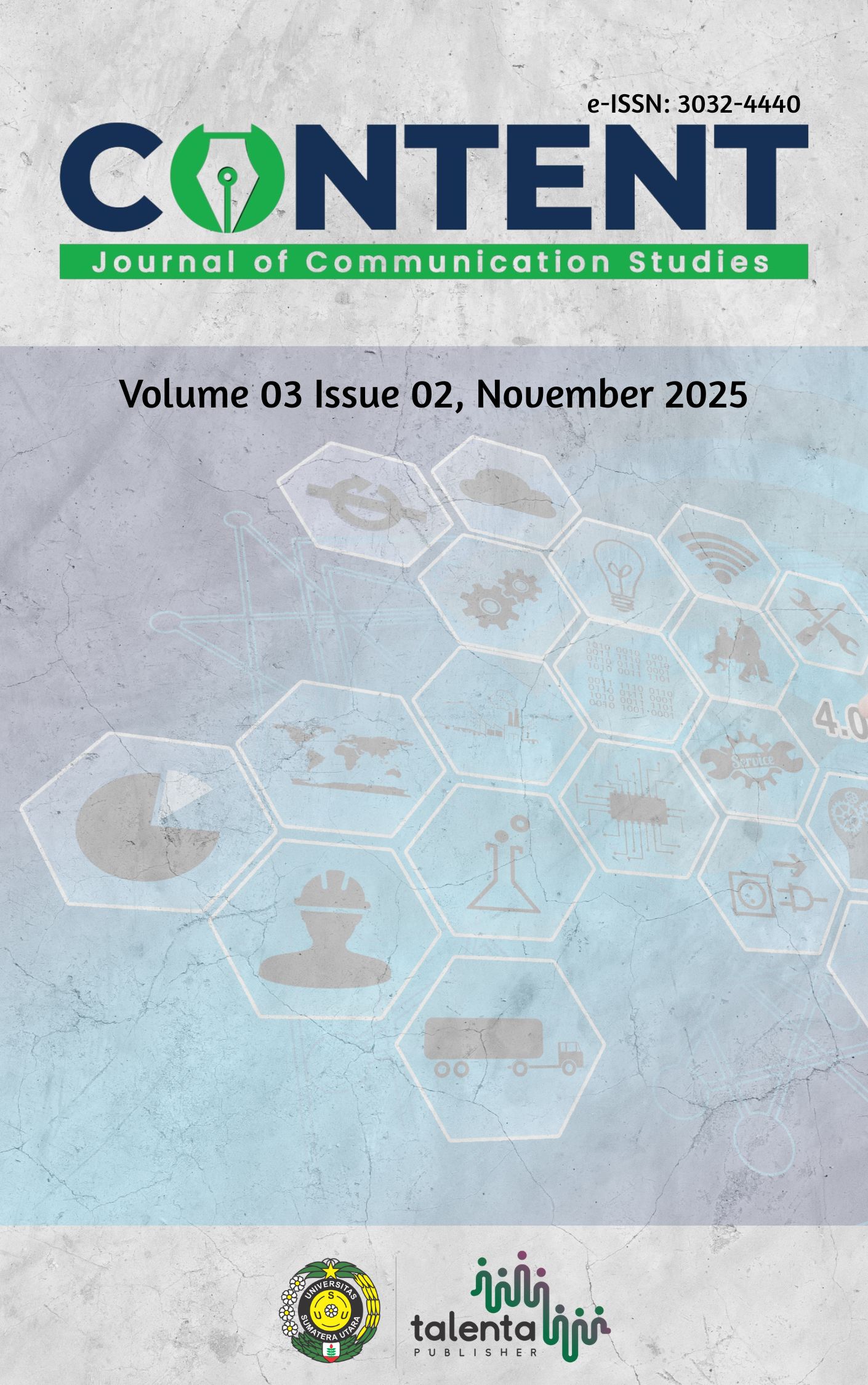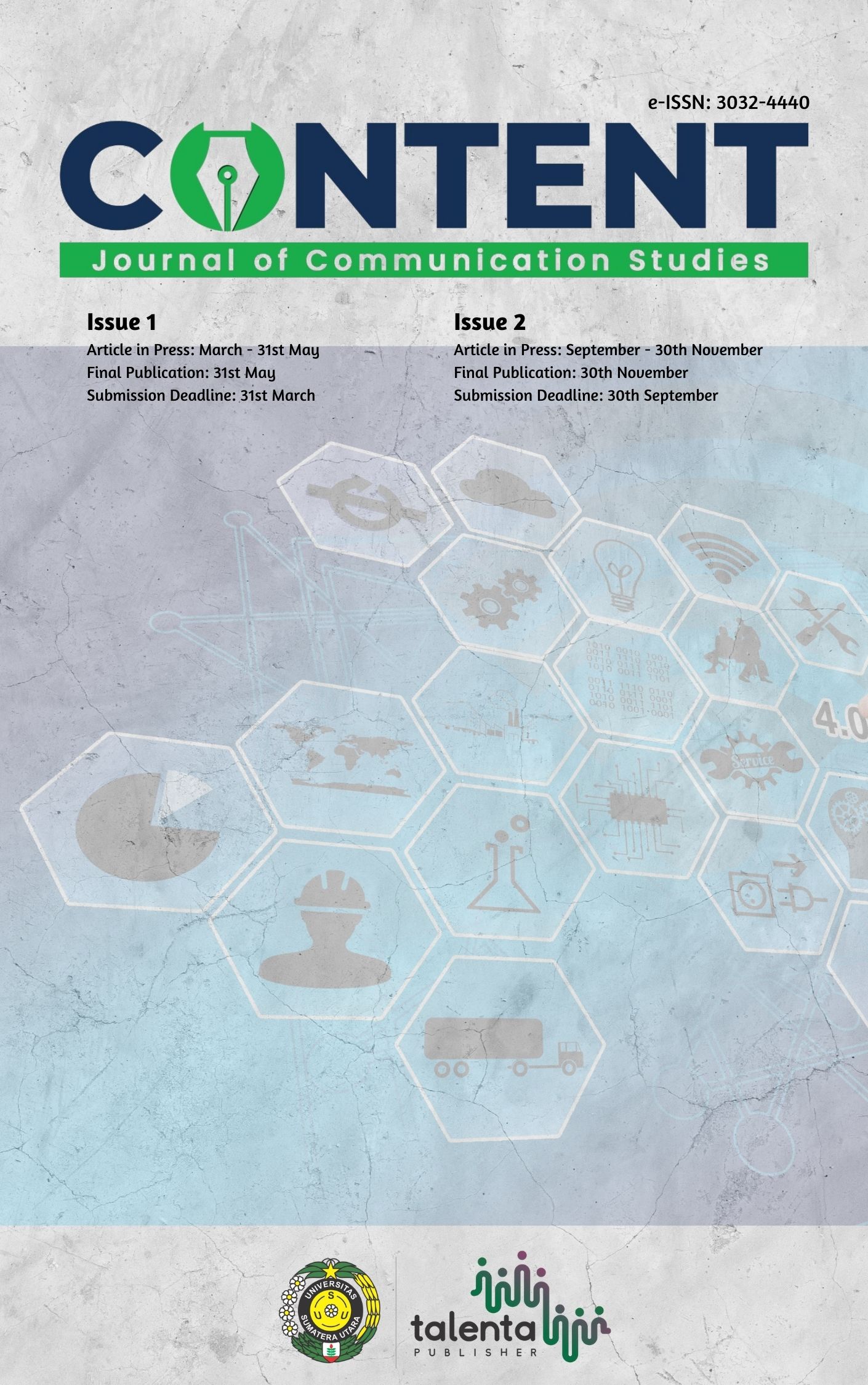About the Journal

CONTENT: Journal of Communication Studies (CJCS)
|
CONTENT: Journal of Communication Studies is a scientific journal managed by the Communication Science Laboratory and is under the auspices of the Bachelor of Communication Sciences Department, Faculty of Social and Political Sciences, University of Sumatera Utara. This peer-reviewed journal is published by TALENTA Publisher 2 times a year, with a double-blind policy for all articles that will be published in May and November. Journal of Content is expected to be a forum for research results in the field of Communication Science that are relevant to the current situation. The level of communication studies presented can go beyond various levels, both micro, mezzo, and macro. All articles in this journal will be reviewed by academically competent parties with a more specific focus of study in each field of Communication Science. |
|
| As a form of commitment to the advancement of science and technology, Journal Content follows an open policy that allows published articles to be available online and free of charge without having to subscribe. Each publication contains 5 (five) research articles written in English or Bahasa, which will be available for open access online. Journal content is expected to be a means of periodic national scientific publications or reputable international publications through online publications. | |
| Journal title | Content: Journal of Communication Studies |
| Abbrevation | Content |
| Initial | CJCS |
| Frequency | 2 (two) issues per year |
| ISSN (Print) | - |
| ISSN (Online) | 3032-4440 |
| Digital Object Identifier (DOI) | 10.32734 |
| Editor-in-Chief | Mazdalifah, Ph.D |
| Managing Editor | Munzaimah M. S.Sos., M.I.Kom. Sabilla Tri Ananda, S.I.Kom, M.Si. |
| Publisher | TALENTA Publisher, Universitas Sumatera Utara |
| Citation Analysis | Google Scholar |
Current Issue

This issue explores communication practices across interpersonal interactions, public service contexts, and new media environments. It highlights how individuals and institutions exchange information, construct meaning, and adapt to the evolving dynamics of digital communication that shape contemporary social life. All articles in this issue (5 original research articles) were authored by 5 authors from 1 country (Indonesia).











